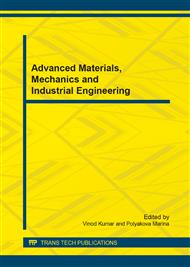p.156
p.160
p.164
p.169
p.174
p.181
p.189
p.194
p.198
Modeling of a Wind Turbine Blade Coupled with Aerodynamic Loads in Passive Damping Control
Abstract:
For a wind energy generator, the most significant factor which decreases the working life of it is the vibration from the rotating turbine blades under wind. In this paper, we do modeling and simulating in the constrained layer damping (CLD) approach, which is called passive control. Here, we use software PRO/ENGINEER to design and model a wind turbine blade before using COMSOL to simulate the dynamic motion of the wind turbine blade and its interaction with aerodynamic force of wind in finite element method. Some different models are built, the original turbine blade and the turbine blade with damping patches on different location and quantity. Then, according to the simulation results, we compare the effects of passive damping control in defferent patches locations and quantities under different wind speed. This research can provide us foundation and comparision with our future study which is related to the piezoelectric layer damping (PLD).
Info:
Periodical:
Pages:
174-180
Citation:
Online since:
July 2014
Authors:
Price:
Сopyright:
© 2014 Trans Tech Publications Ltd. All Rights Reserved
Share:
Citation:


